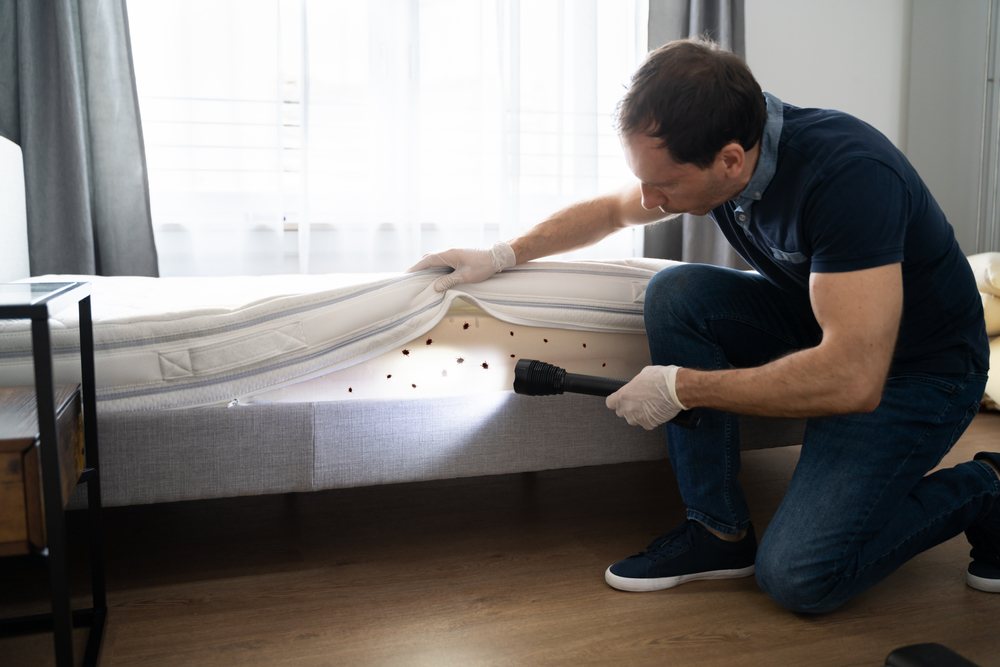The Ultimate Guide to Chemical Treatment for Bed Bugs: How to Safely and Effectively Rid Your Home of Pests

Image Source: Google
Dealing with a bed bug infestation can be a frustrating and stressful experience. These tiny pests can quickly multiply and spread throughout your home, making it challenging to eliminate them completely. While there are various methods for getting rid of bed bugs, chemical treatment is often a highly effective solution.
In this guide, we will discuss how to safely and effectively use chemical treatments to eliminate bed bugs from your home. If you are looking for the best chemical treatment for bed bugs then, you can look at this site.
Understanding Bed Bugs and the Need for Chemical Treatments
Bed bugs are small, reddish-brown insects that feed on the blood of humans and animals. These pests are commonly found in areas where people sleep, such as beds, couches, and other furniture. Bed bugs can reproduce quickly, making it essential to address an infestation promptly.
Why Use Chemical Treatments?
Chemical treatments are often the most effective way to eradicate bed bugs from your home. Here are some reasons why chemical treatments are a popular choice:
- Chemical treatments can reach areas that are difficult to access, such as cracks and crevices where bed bugs hide.
- Chemicals can provide residual protection, killing bed bugs even after the initial treatment.
- Professional-grade chemical treatments are potent and can eliminate bed bugs at all life stages, including eggs, nymphs, and adults.
Types of Chemical Treatments for Bed Bugs
There are several types of chemical treatments that can be used to combat bed bug infestations. It is essential to choose the right type of treatment based on the severity of the infestation and the type of area being treated. Here are some common types of chemical treatments for bed bugs:
Liquid Insecticides
Liquid insecticides are one of the most common forms of chemical treatments used to kill bed bugs. These products are typically sprayed directly onto surfaces where bed bugs are present, such as mattresses, furniture, and baseboards.
Dust Insecticides
Dust insecticides are powders that can be applied to cracks and crevices where bed bugs hide. The dust sticks to the bugs' bodies, dehydrating them and eventually leading to their death.
Insecticide Concentrates
Insecticide concentrates are highly concentrated forms of insecticides that need to be diluted with water before use. These products are effective at killing bed bugs on contact and providing long-lasting protection.
Steps for Safely Using Chemical Treatments
While chemical treatments can be highly effective at eliminating bed bugs, it is crucial to follow safety precautions when using these products. Here are some steps to safely use chemical treatments for bed bugs:
Preparation
- Remove clutter from the infested area to make it easier to apply the chemical treatments.
- Vacuum the area thoroughly to remove any bed bugs, eggs, and debris.
- Wash and dry all bedding and clothing on high heat to kill any bed bugs present.
Application
- Read and follow the instructions on the chemical treatment product carefully.
- Wear protective gear, such as gloves and a mask, when applying chemical treatments.
- Apply the chemical treatment to areas where bed bugs are present, following the recommended application method.
Post-Treatment
- Avoid entering the treated area until the chemical treatment has dried completely.
- Monitor the infested area for any signs of bed bugs and reapply the chemical treatment if necessary.
- Clean and disinfect surfaces in the treated area to remove any residue from the chemical treatment.
By following the tips outlined in this guide and using chemical treatments effectively, you can safely and successfully rid your home of bed bugs. Remember to exercise caution when using chemical treatments and seek professional help if needed.